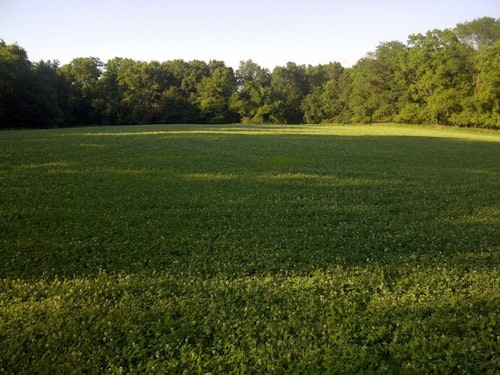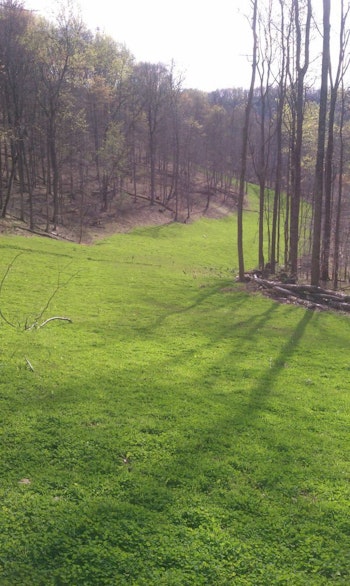In western Wisconsin, I'm blessed to own 40 acres of ground, and it’s adjacent to my dad’s 160, and a buddy’s 40. Our whitetail hunting group’s 240 acres borders public property on two sides, and the public chunk is very large for the area — nearly 20 square miles of forest with no agricultural fields.
My buddy has two small food plots (1/16 and 1/8 acres) on his ground, I have one 2-acre field and Dad has several plots, ranging in size from 1/16 to 4 acres. Each spring when we begin thinking about food plot planting dates, we consider what we’ve done in the past that worked well, and use the history for making better decisions moving forward.
This spring we’ll do the same analysis, but I’m considering a major change. The more I read about DIY land management for whitetails, and watch YouTube videos on the subject, the topic of food plot shape is something our group has neglected to carefully consider. (In general, our food plots are square or nearly square.)
What I’m learning is food plot shape matters — a lot. And I’m not talking about food plot shape as it pertains to getting close-range bow shots.

In terms of total food provided to deer, it’s true the shape of a field is irrelevant. Whether a 1-acre field is a square, a circle, or a long and narrow rectangle doesn’t matter in terms of food production. Food plot shape matters to hunters because of the way whitetails bed and travel in relation to that food source.
Doe groups will bed in the first available suitable cover near a food plot. If that plot is a square or circle, and it’s positioned in the corner of a property, then all the deer will be forced into entering and leaving the field in one small area. Your thinking: This is perfect. I can cover all the trails entering the field from one treestand!
That might be true, but the downside is this arrangement causes doe groups to stack up behind each other. They don’t want to bed together, so doe family No. 1 is closest to the field entrance, then a bit deeper in the woods is doe family No. 2, then No. 3 and so on. The doe families have to constantly work out dominance (pecking order) issues, and in simplest terms, all deer are a bit on edge trying to protect each one’s turf.
And this is most important: Bucks, especially mature ones, are pushed well back of the field entrance to find suitable bedding, so far in fact that they might have to leave your property entirely. Not good!
The solution? Instead of a square 1-acre food plot (approximately 70 yards by 70 yards) along a property border or in a corner, install a long and narrow 1-acre food plot (example: 10 yards by 484 yards). This could be located along a property edge, and it’s even better if you have two long and narrow plots, one along the base of a property and another up an adjacent side. Tip: One easy way to install these long and narrow food plots is by planting existing logging roads.
With this arrangement, doe families can spread out and bed near the food plots over their entire length. No doe groups are pushed back deeper in the woods. Each doe group can enter and exit a linear food plot without bumping into other deer. As a result, bucks can bed in suitable cover behind each doe group, and they have a lot to choose from, all right on your property.
This spring I’ll do my best to convince my dad and buddy that we need to change up our food plot shape program with the goal of providing better doe and buck bedding opportunities on our 240 acres. I suggest you do the same on your whitetail ground.







